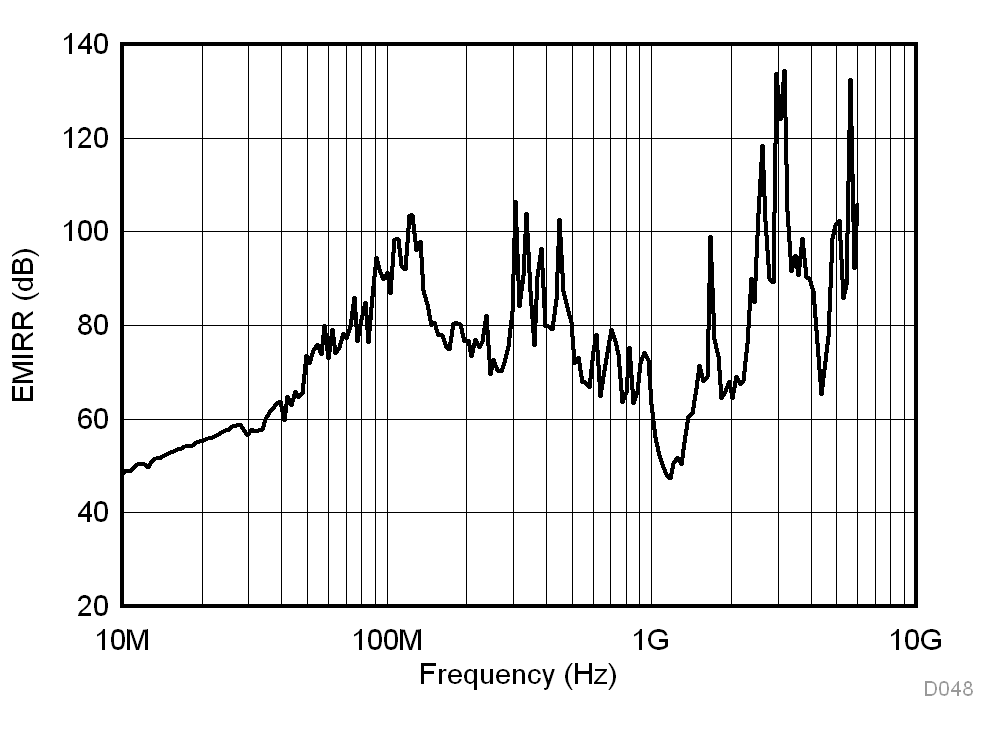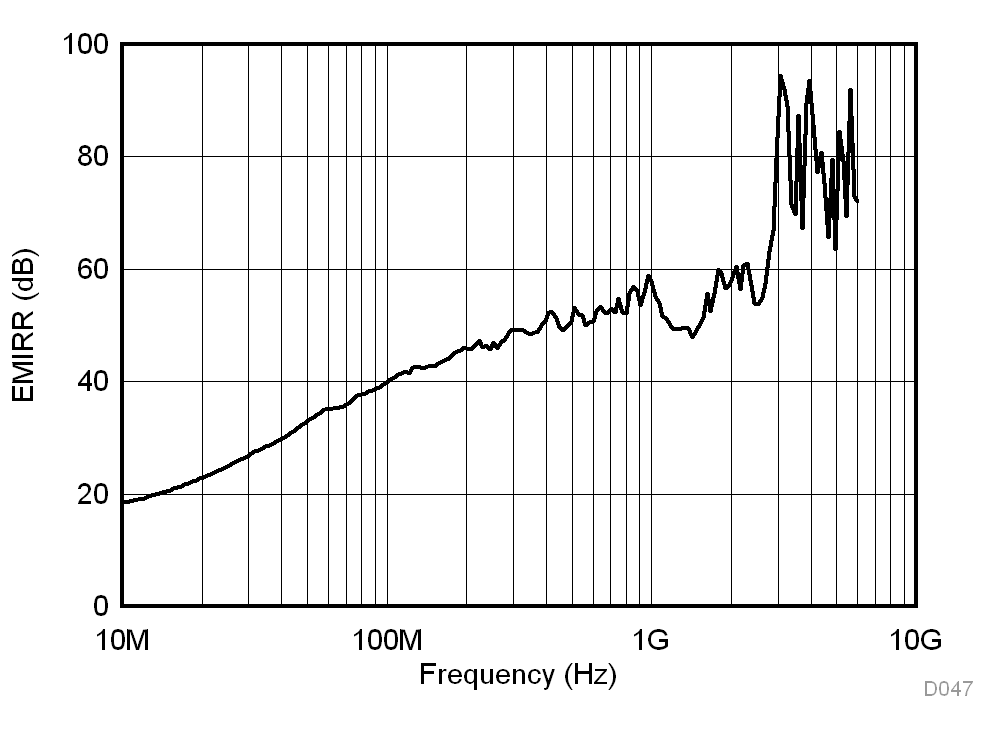JAJSH88A April 2019 – June 2019 INA818
PRODUCTION DATA.
8.3.2 EMI Rejection
Texas Instruments developed a method to accurately measure the immunity of an amplifier over a broad frequency spectrum extending from 10 MHz to 6 GHz. This method uses an EMI rejection ratio (EMIRR) to quantify the ability of the INA818 to reject EMI. The offset resulting from an input EMI signal is calculated using Equation 2:

where
- VRF_PEAK is the peak amplitude of the input EMI signal.
Figure 56 and Figure 57 show the INA818 EMIRR graphs for differential and common-mode EMI rejection across this frequency range. Table 3 lists the EMIRR values for the INA818 at frequencies commonly encountered in real-world applications. Applications listed in Table 3 are centered on or operated near the frequency shown. Depending on the end-system requirements, additional EMI filters may be required near the signal inputs of the system. Incorporating known good practices, such as using short traces, low-pass filters, and damping resistors combined with parallel and shielded signal routing may also be required.


Table 3. INA818 EMIRR for Frequencies of Interest
| FREQUENCY | APPLICATION OR ALLOCATION | DIFFERENTIAL EMIRR | COMMON-MODE EMIRR |
|---|---|---|---|
| 400 MHz | Mobile radio, mobile satellite, space operation, weather, radar, ultrahigh-frequency (UHF) applications | 52 dB | 80 dB |
| 900 MHz | Global system for mobile communications (GSM) applications, radio communication, navigation, GPS (up to 1.6 GHz), GSM, aeronautical mobile, UHF applications | 55 dB | 71 dB |
| 1.8 GHz | GSM applications, mobile personal communications, broadband, satellite,
L-band (1 GHz to 2 GHz) |
58 dB | 73 dB |
| 2.4 GHz | 802.11b, 802.11g, 802.11n, Bluetooth®, mobile personal communications, industrial, scientific and medical (ISM) radio band, amateur radio and satellite, S-band (2 GHz to 4 GHz) | 59 dB | 95 dB |
| 3.6 GHz | Radiolocation, aero communication and navigation, satellite, mobile, S-band | 78 dB | 96 dB |
| 5 GHz | 802.11a, 802.11n, aero communication and navigation, mobile communication, space and satellite operation, C-band (4 GHz to 8 GHz) | 70 dB | 100 dB |